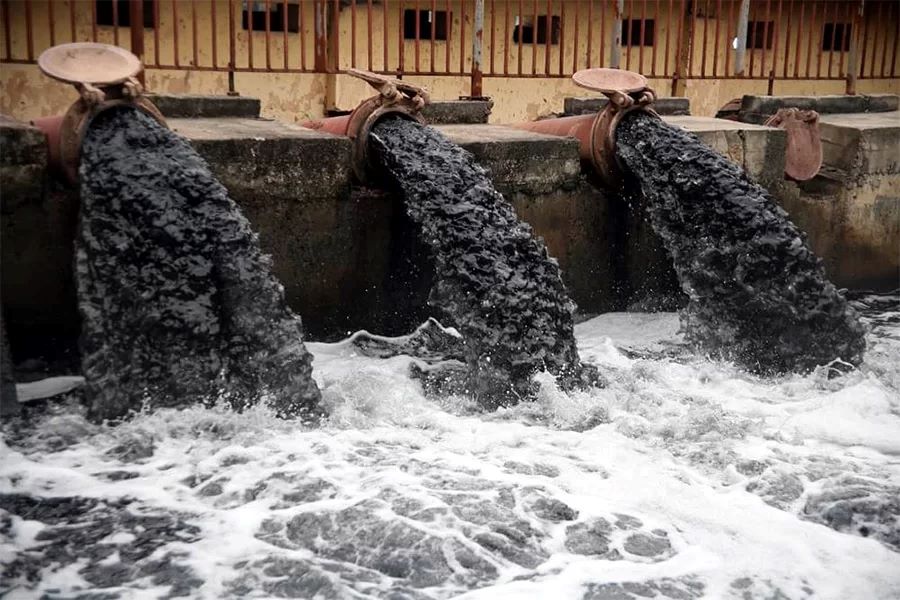Reusing treated wastewater is becoming a strategic solution for businesses during 2025–2030, as water demand continues to rise while freshwater resources decline. This approach not only helps companies significantly reduce operational costs but also optimizes resource usage and reduces pressure on traditional water supply systems. At the same time, water reuse helps meet increasingly strict environmental standards, enhancing corporate reputation and sustainable image in the eyes of communities and partners.
Water use in production is becoming a major cost burden for many businesses, especially as clean water prices continue to increase and industrial zones face frequent supply shortages. In addition, tightening environmental regulations require companies to optimize their water usage and discharge processes to reduce legal risks, protect their reputation, and maintain long-term sustainable operations.
In the current green development trend, reusing treated wastewater creates a dual benefit: reducing operating costs while ensuring a stable water supply for production needs. This not only improves resource management efficiency but also demonstrates social responsibility, strengthens competitive advantage, and meets market expectations for environmentally friendly business models.

Environmental regulations are becoming increasingly strict, requiring businesses to optimize water use and discharge processes.
Reused water is water recovered from an existing wastewater treatment system and then upgraded using technologies such as fine filtration, UF/MF membranes, RO, or disinfection with UV–ozone to achieve the required quality for specific applications.
Depending on factory needs, recycled water can be used for irrigation, floor washing, forklift cleaning, cooling systems, or even as boiler feedwater if high purity standards are met.
Examples:
MF/UF membranes effectively remove TSS, microorganisms, and fine suspended particles, ensuring the clarity needed for general cleaning activities within factories. This technology operates stably, consumes low energy, and is easy to integrate into existing treatment systems. It allows businesses to reuse treated water for applications that do not require high purity.
RO technology removes minerals, ions, and heavy metals to produce high-purity water suitable for boilers and cooling systems. RO helps protect equipment from scaling and corrosion, extending lifespan and improving efficiency. This solution is ideal for production lines requiring high-quality feedwater.
Disinfection technologies such as UV, ozone, and chlorine ensure microbiological safety of reused water. They help eliminate odors, control bacteria, and reduce the risk of recontamination during storage. These methods also help protect downstream equipment and piping.
AOP effectively treats hard-to-degrade organic compounds and is especially suitable for textile dyeing and light chemical production. Strong oxidation reactions help reduce color, COD, and improve overall water quality, making the treated water suitable for reuse in various production processes.

Common technologies used in wastewater reuse systems
Using reclaimed water for non-critical production processes helps businesses significantly cut down water purchasing costs. This reduction is direct and measurable in monthly operating expenses, with many businesses reporting 20–60% savings after implementing reuse solutions.
During dry seasons, industrial water shortages frequently occur in Binh Duong, Dong Nai, and Long An, affecting production. Reusing water helps businesses maintain a stable supply, reducing dependency on external sources and decreasing risks of production disruption.
By reducing the discharge flow to the environment, the wastewater treatment system operates more stably and is less prone to overloading. This maintains consistent effluent quality and reduces the risk of exceeding discharge limits. It also lowers maintenance and repair costs.
Water reuse demonstrates responsible resource management and minimized environmental impact. This is an essential requirement for ESG compliance demanded by international corporations within global supply chains. As a result, businesses strengthen their reputation and attract more partners.
Assessing treated water quality: Businesses must analyze parameters such as TSS, COD, BOD, conductivity, and microbiology to determine reuse feasibility. This is the basis for selecting appropriate recycling technologies.
From 2025 to 2030, Vietnam is expected to strongly promote resource-saving solutions, with wastewater reuse becoming a top priority in industrial zones and manufacturing plants. The increasing demand for production water, combined with declining surface and groundwater resources, compels businesses to adopt new approaches. This period also marks the introduction of supportive policies encouraging water recycling technologies, driving rapid development of reuse systems.
In addition to policy factors, ESG requirements from international corporations push domestic businesses to focus more on water optimization. As advanced treatment technologies become more accessible, more affordable, and more efficient, wastewater reuse becomes a practical option even for small and medium-sized enterprises. Therefore, this trend is expected to expand broadly and become a key component of sustainable production strategies in Vietnam’s industrial sector.
.jpg)
Water reuse is becoming a top priority in industrial zones and manufacturing plants.
Reusing treated wastewater is a practical, effective, and environmentally aligned solution for today’s businesses. It is not only a method of saving water but also a long-term strategy to optimize costs, reduce operational pressure, and enhance competitiveness. As water resources become increasingly valuable, recycling and reusing water is a crucial step toward sustainable development for modern enterprises.